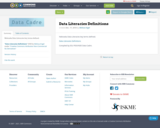
Nebraska Data Literacies key terms defined.
- Subject:
- Mathematics
- Measurement and Data
- Material Type:
- Primary Source
- Date Added:
- 11/15/2018

Nebraska Data Literacies key terms defined.

This guide is the fourth and final guide in the series and focuses on evaluating the processes and outcomes in the strategic plan.
Evaluation is central to strategic planning as it allows you to review what is and isn’t working on the school improvement journey. There are 2 types of evaluation you should consider:
Process evaluation examines whether practices have been applied in the way they were planned.
Outcome evaluation examines whether practices are having the desired effect on student learning.
Process and outcome evaluation both play key roles at different stages of a strategic plan’s life cycle.
This guide recommends practical steps for evaluating processes for improving practices, as well as the effect of these practices on student learning. We recommend reading this guide after you have read the third guide in this series, Selecting Practices to Deliver Improvement.
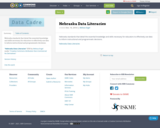
Nebraska standards that detail the essential knowledge and skills necessary for educators to effectively use data to inform instructional and programmatic decisions.
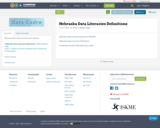
Nebraska Data Literacies key terms defined.
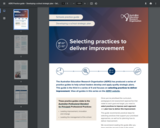
This guide is the third in a series of 4 and focuses on selecting practices to deliver improvement. Once you’ve prioritised the curriculum, pedagogical and assessment approaches that relate to each goal and target, you need to select practices to improve each approach and plan how to deliver this improvement. For the purpose of this guide, a practice is the practical application of an approach. This guide recommends practical steps for selecting practices that support your prioritised approaches, as well as for planning how to deliver improvement. We recommend reading this guide after you have read the second guide in this series, Prioritising Approaches to Achieve Each Goal. After reading this guide, we recommend you read Evaluating for Continuous Improvement.
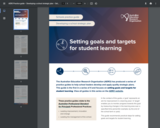
Strategic planning is an iterative process that requires a purposeful investment of time. These guides are designed for flexible use alongside system supports, providing a starting point rather than a complete outline of everything schools must do. They are designed to help school leaders with strategic planning directly related to learning. School leaders may also choose to include aspects of school improvement that enable learning (for example, student wellbeing) using a similar approach. Some guidance may not apply in all contexts and may look different in schools of different sizes. Reasonable adjustments should be made to fit school context where necessary. This guide is the first in a series of 4 and focuses on setting goals and targets for student learning. In the context of this guide, a 'goal’ represents an aim for improvement in a learning area. A ‘target’ enables you to monitor progress towards this goal by measuring changes in the learning area over a specified time period (for example, by the end of the school term or year). This guide recommends practical steps for setting goals and targets for student learning. After reading this guide, we recommend you read Prioritising Approaches to Achieve Each Goal.
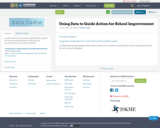
A collaborative project between NDE, McREL, and ESU #1 to provide standardization of data analysis procedures for use in schools statewide.